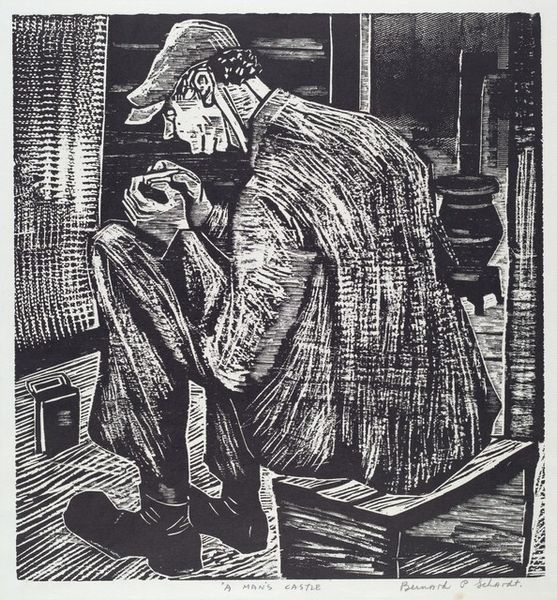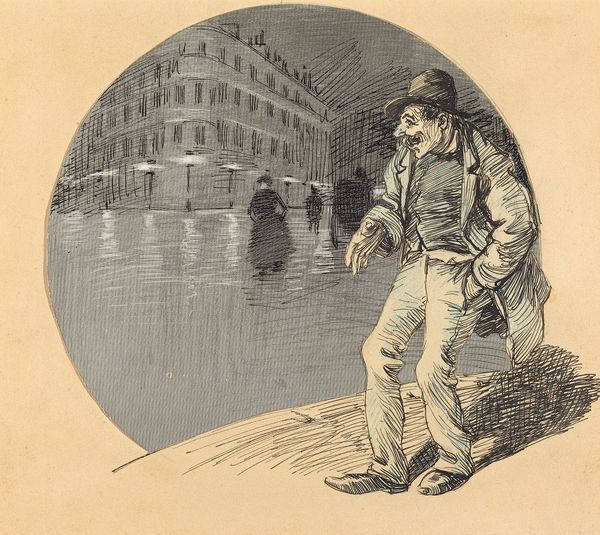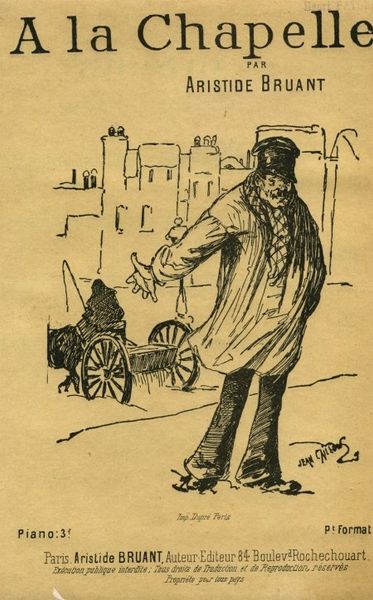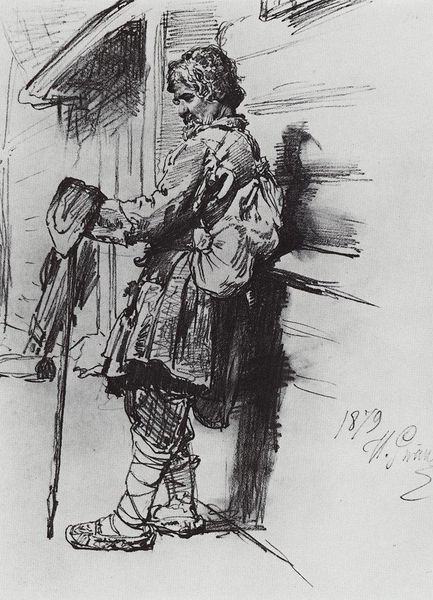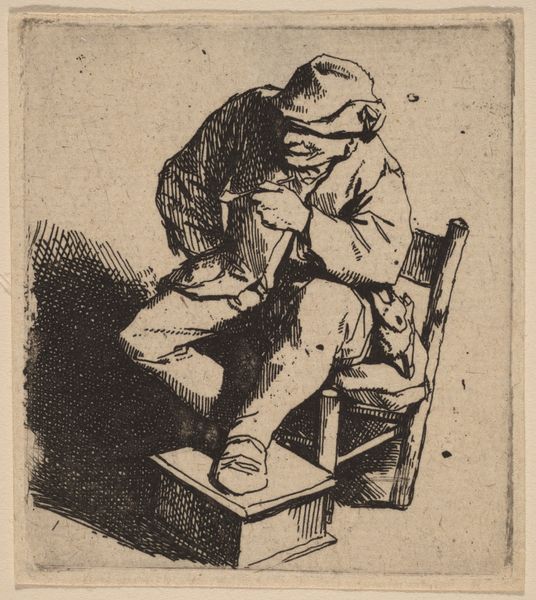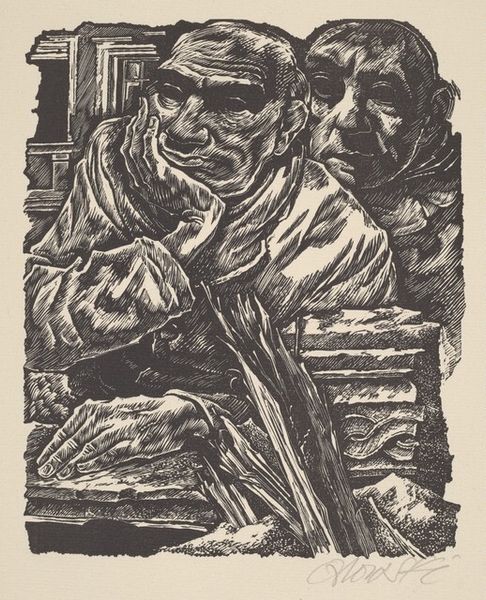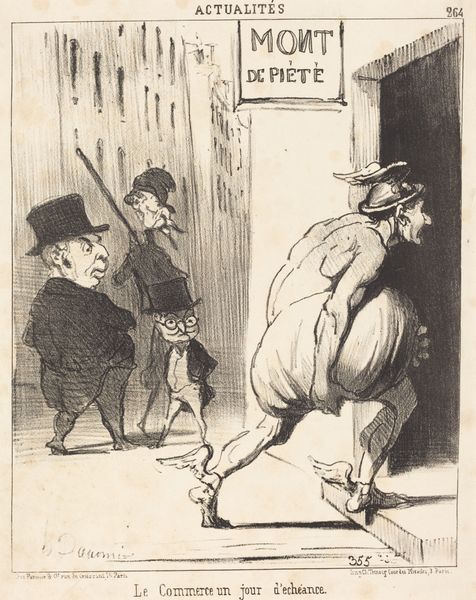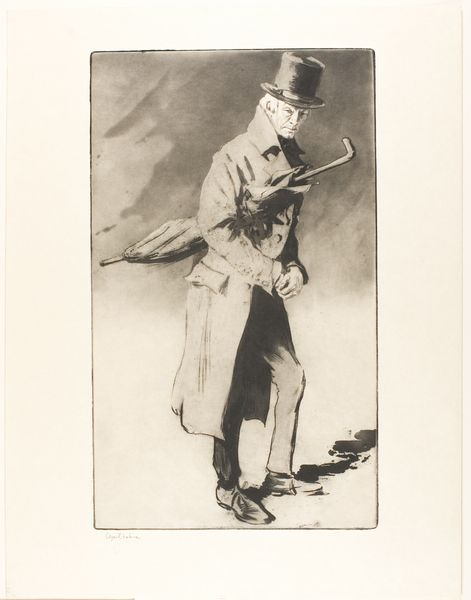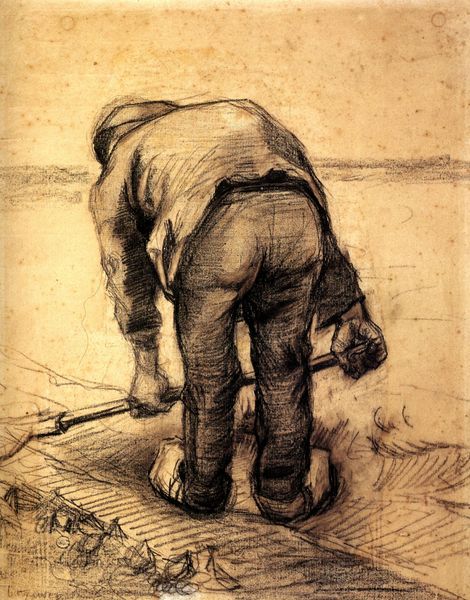
photography
#
portrait
#
social-realism
#
street-photography
#
photography
#
black and white
#
monochrome photography
#
monochrome
#
realism
#
monochrome
Dimensions: image/sheet: 49.1 × 39.3 cm (19 5/16 × 15 1/2 in.)
Copyright: National Gallery of Art: CC0 1.0
Editor: We're looking at Lisette Model's black and white photograph, "Blind Man, Paris," taken sometime between 1933 and 1976. The mood is undeniably somber, almost theatrical, focusing on this seated figure. What do you see in this photograph that goes beyond the immediately visible? Curator: It's a visceral piece, isn’t it? Model really captures a world-weariness. Forget your polished Cartier-Bresson 'decisive moment'; this feels raw, unflinching. I see the weight of societal indifference in his slumped posture, in the very texture of his worn clothes. I wonder what he's thinking. The out-of-focus advertisement above his head becomes an ironic commentary, a blur of promises he probably can't access. What do *you* feel when you look at him? Editor: I think it's the texture that grabs me too. The rough stone wall, the woven hat, the man's weathered face – they all contribute to this feeling of… tangible hardship. It makes me think about the invisible people we often overlook. Curator: Exactly! And that’s the power of social realism, isn’t it? To yank us out of our comfort zones. Model doesn’t want you to just observe; she wants you to *feel* his reality, his isolation. It’s confrontational. Editor: It certainly disrupts easy viewing. It almost feels intrusive. Curator: And perhaps that's the point. Great art often challenges us, disturbs us. It prompts us to question our perceptions and our place in the world. It's not just about seeing; it's about understanding. Model accomplishes that masterfully, wouldn't you say? Editor: Absolutely. It makes me want to know more about his story and the stories of others like him. I hadn't considered how the background advertisement serves almost as an ironic counterpoint. Thanks for pointing that out!
Comments
No comments
Be the first to comment and join the conversation on the ultimate creative platform.

